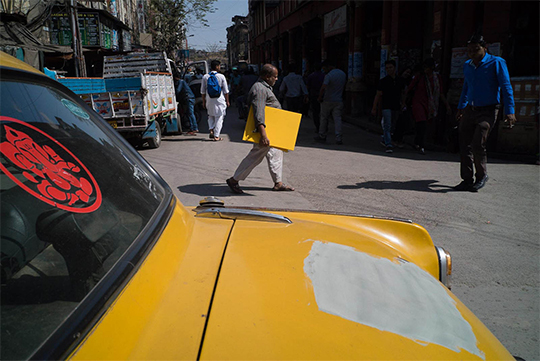Studio 22
Capriccio, Folly, City
Richen Jin

This studio is available to students enrolled in ABPL90142 Studio C, ABPL90143 Studio D, and ABPL90115 Studio E.
Studio Description
“There’s no such thing as criticism, there is only history.”
Tafuri, 1985.
History repeats itself, - though context may be gentrified, glorified, camouflaged, or misplaced ever slightly, the fundamental issue of human society remains unanimous.
Core, however, always stays. In architecture, it’s autonomy and the formal language. And often formal issues are exonerated and neglected by the complexity of the context: political statement, technological optimism, sociology, statistical analysis, phenomenology, etc. - form renounce and compromise when context coincides.
And we end up with 2 polarized, equally bad end products with no criticality in the study of autonomy and form:
- it be disenchanted ‘avant-garde’, wacky ‘organic’ forms, entailing a ‘motif’ and call it a day - some are even worse with excessive colors and patterns.
- it be beautified deadest modernist generic boxes with calculated greeneries - built as commodities to maximize the indulging and absorbing capitalist gesture of generosity.
We are able to produce, and construct more critical architecture.
We need to study and learn from the masters, whose oeuvre and theories created a critical and lucid view towards architectural form and city:
- Aldo Rossi,
- Arata Isozaki,
- John Hejduk,
- James Stirling.
Through critical studies of their built/unbuilt projects, we will examine and reflect the discourses on the contemporary setting (context) from architectural viewpoints as well as how an architectural project could act as a point of entry towards the city.
Studio Outcomes
Through 7 selected built/unbuilt projects of Rossi, Isozaki, Hejduk, and Stirling, the studio will investigate:
- The image of an ‘ideal’ city by forming a critical stance from the selected architect’s view towards the city. (Capriccio)
- The alternative of the ‘idea’ through formal design. (Folly)
After the first 2 projects, students will carry the material into the final project: to construct/recompose a city within an existing city. (City)
Studio Leader
Richen Jin: www.unorthodoxparadigm.com
Richen’s interest lies in Fujii and Gregotti’s body of work 1964-1985; the synthesis of their implicit anti-Zeitgeist/Genius loci on autonomous architecture and its latent & (non)contingent materialization in Australia.
Readings & References
- Aureli, Pier Vittorio, ed. The City as a Project. Berlin: Ruby Press, 2016.
- Aureli, Pier Vittorio. “More and More About Less and Less: Notes Toward a History of Nonfigurative Architecture.” Log, Spring/Summer 2009, No. 16 (Spring/Summer 2009): 7-18.
- Aureli, Pier Vittorio. The Possibility of an Absolute Architecture. Cambridge: The MIT Press, 2011.
- Aureli, Pier Vittorio. The project of Autonomy, Politics and Architecture within and against Capitalism. New Jersey: Princeton Press, 2008.
- Tafuri, Manfredo. “There is no criticism, only history.” Design Book Review, no. 9, spring 1986, pages 8-11.
- Tafuri, Manfredo. Dal Co, Francesco. Modern Architecture. London: Academy Editions, 1980.
- Steil, Lucien, ed. The Architectural Capriccio: Memory, Fantasy, and Invention. Surrey: Ashgate Publishing Limited, 2014.
- Trummer, Peter. “The City as an Object: Thoughts on The Form of the City.” Log, Winter/Spring 2013, No. 27 (Winter/Spring 2013): 51-57.
- Vidler, Anthony. “History of the Folly.” In Follies: Architecture for the Late-Twentieth-Century Landscape, edited by B.J. Archer, 10-13. New York: Rizzoli, 1983.
- Moneno, Rafael. Theoretical anxiety and design strategies in the work of eight contemporary architects. London: The MIT Press, 2004.
- Vidler, Anthony. James Frazer Stirling: Notes from the Archive. New Haven: Yale University Press, 2010.
- Lawrence, Amanda. James Stirling: Revisionary Modernist. New Haven: Yale University Press, 2012.
- Hejduk, John. Mask of Medusa. New York City: Random House Incorporated, 1985
- Kubota, Keiko. Hotel Il Palazzo: A City Stimulated by Architecture. Shuhei Hashimoto, 1990.
Schedule Mondays and Thursdays 18:15-21:15